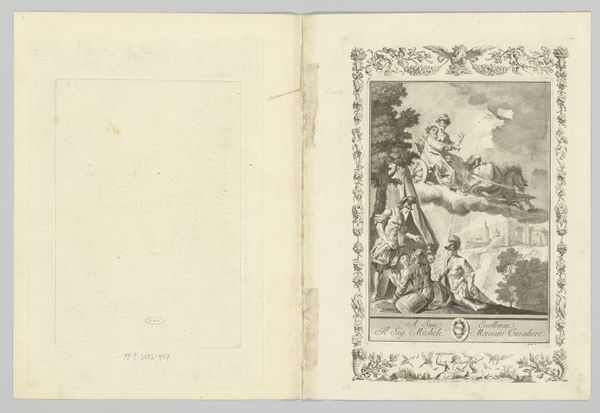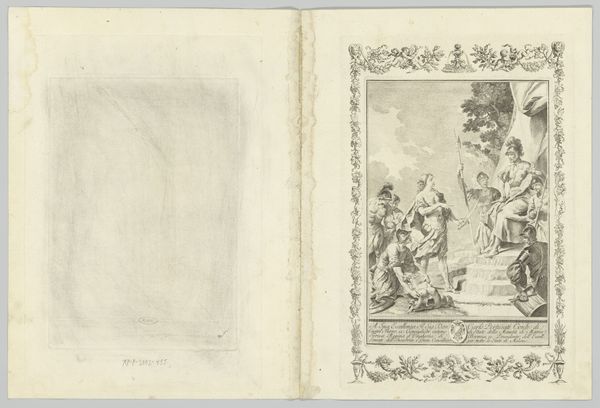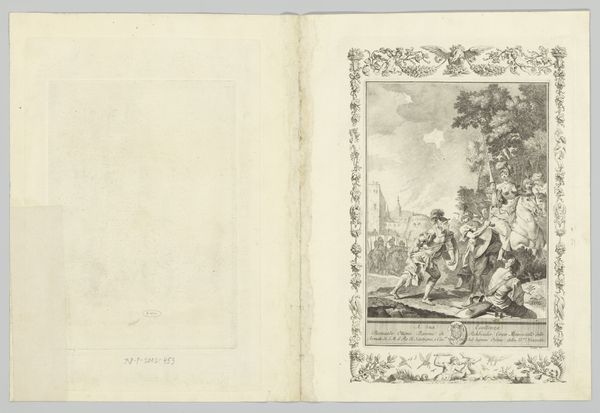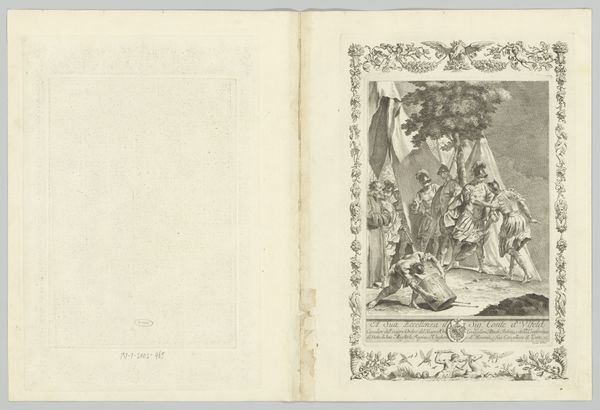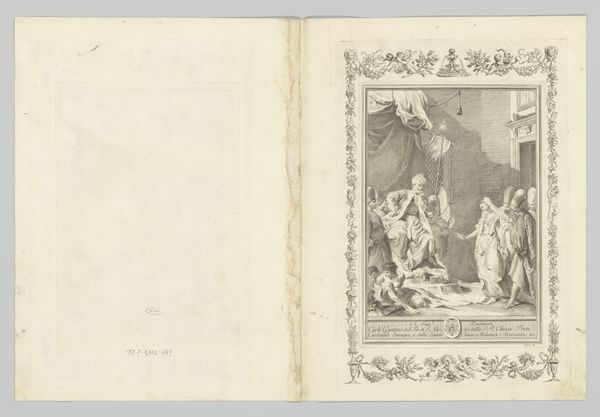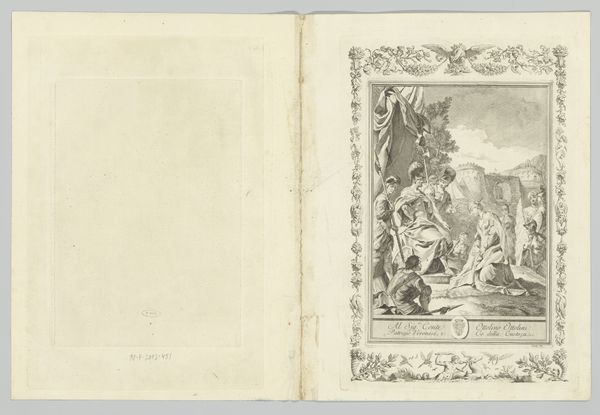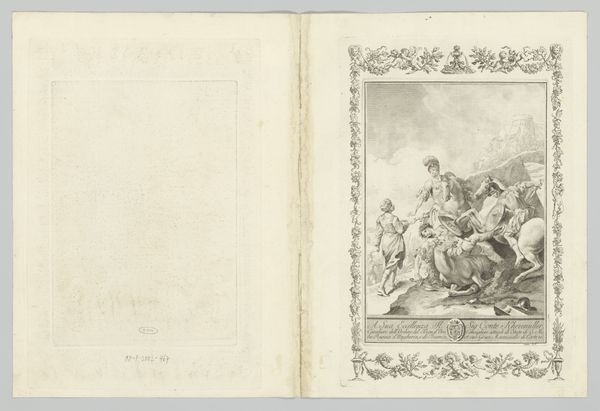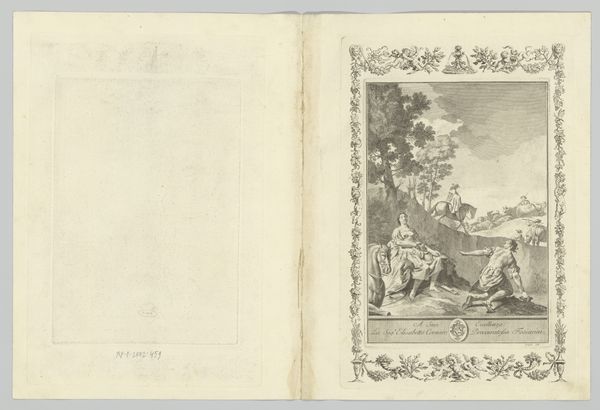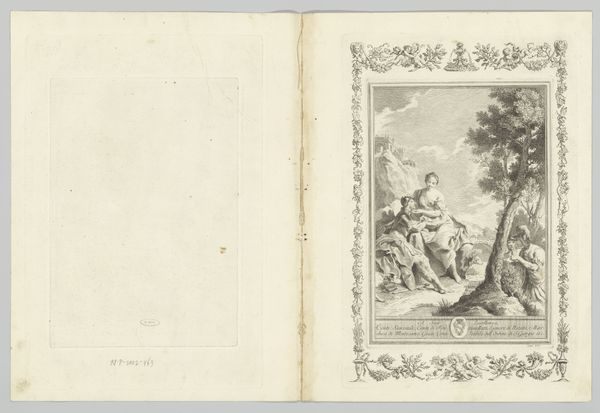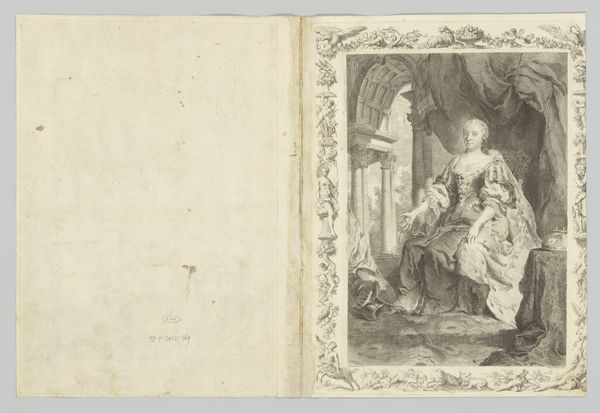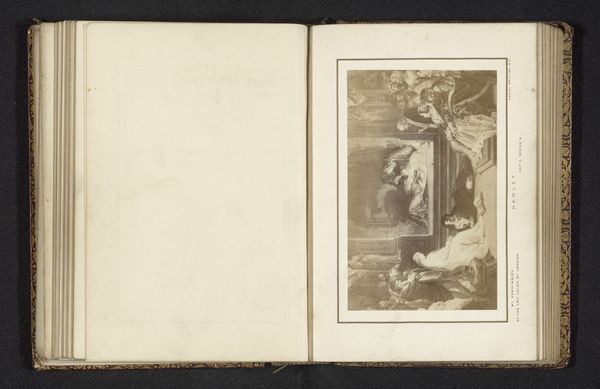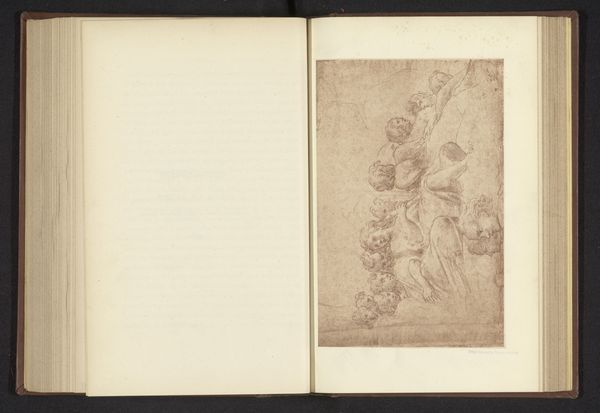
print, paper, ink, engraving
#
baroque
# print
#
figuration
#
paper
#
ink
#
history-painting
#
engraving
Dimensions: height 290 mm, width 200 mm, height 381 mm, width 254 mm
Copyright: Rijks Museum: Open Domain
Curator: Here we have "Scène uit La Gerusalemme Liberata," an engraving rendered in ink on paper by Martin Schedel, dating back to 1745. It presents a scene steeped in the Baroque style. Editor: It has this incredibly delicate and ornamental quality to it. The monochromatic scheme allows the details and intricacy of the characters' garments and expressive faces to really come forward. There’s an inherent drama. Curator: Indeed. Schedel, as a printmaker, was deeply embedded in a network of workshops and publishers. Reproducing and circulating images from “La Gerusalemme Liberata”—Torquato Tasso’s epic poem—meant contributing to the broader dissemination of cultural narratives and reinforcing the power of the Church and aristocracy. Editor: Looking at it formally, there's also a fascinating interplay between light and shadow. See how Schedel modulates the tones with the delicate engraving marks to create the illusion of depth, especially in rendering the dramatic background setting? It's like theater. Curator: Exactly. Schedel's success depended on understanding the market. The piece needed to attract patrons like Cardinal Camillo Paolucci whose name and coat of arms appears on this dedication piece which served both aesthetic and propaganda purposes, embedding its consumer firmly into its making. Editor: Notice how the border further accentuates the main scene. The artist paid close attention to the relationships between forms, and negative space creating this captivating tableau. The figures dominate our immediate perception while maintaining space and depth. Curator: And beyond pure aesthetic considerations, this print sheds light on printmaking during that era: from the selection of the right paper, to ink application, and the role of craftsmanship in disseminating important themes. It highlights the integration of artistic skill with socio-political agendas. Editor: I find myself completely taken with how the balanced, dynamic arrangement enhances that overall heroic narrative. The precision with which Schedel has translated this narrative into visual form invites contemplation and really exemplifies Baroque ideals. Curator: Well, thinking about this piece has definitely deepened my appreciation for the relationship between art's visual impact and its value as an artifact of its cultural environment. Editor: Absolutely. Thinking through your material lens enriches how to observe visual dynamics—a constant learning process.
Comments
No comments
Be the first to comment and join the conversation on the ultimate creative platform.
